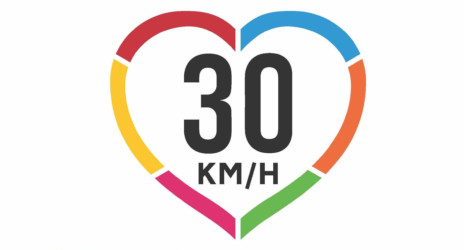Thailand marks “the year of 100 per cent helmet wearing”
By Kwan Pankumhang
Achieving a helmet-wearing rate of 100 per cent is achievable as we learn from road safety stakeholders in Thailand. In January, the main organization responsible for road safety, the Department of Disaster Prevention and Mitigation (DDPM), under Ministry of Interior, organised an event titled, “Commemorating the Year of 100 per cent Safety Helmet Wearing: The Way Forward”.
The Global Road Safety Partnership participated as one of the key supporters of the event, and the activity is part of a national, year long campaign to create awareness on road safety, with a focus on achieving 100 per cent safety helmet wearing – a policy endorsed by the government in support of the UN Decade of Action.
 The Deputy Prime Minister and Minister of Interior, Mr. Yongyuth Wichaidit chaired the event. Participants included high-level representatives from the Ministry of Public Health and Ministry of Transport, stakeholders from the public and private sector such as the Royal Thai Police, international organizations, non-profit organizations and especially distinguished ambassadors from European and Asia countries. Several Thai celebrities were also invited.
The Deputy Prime Minister and Minister of Interior, Mr. Yongyuth Wichaidit chaired the event. Participants included high-level representatives from the Ministry of Public Health and Ministry of Transport, stakeholders from the public and private sector such as the Royal Thai Police, international organizations, non-profit organizations and especially distinguished ambassadors from European and Asia countries. Several Thai celebrities were also invited.
Remarkably, each sector has conducted a number of road safety/helmet wearing projects under the auspices of the Decade of Action, and they remain not only committed to improving road safety in Thailand, but their participation is critical in order to reach a rate of 100 per cent.
 Dr. Thanapong Jinwong of the Road Safety Center provided insight on concrete areas to address. He reported that according to statistics there is vast improvement, but still more work to be done at the national and provincial level.
Dr. Thanapong Jinwong of the Road Safety Center provided insight on concrete areas to address. He reported that according to statistics there is vast improvement, but still more work to be done at the national and provincial level.
For example, Dr. Jinwong explained that overall, rates for helmet wearing in Thailand increased by only 3 per cent, but in some provinces such as Nakorn Srithammarat or Phuket, the figures dramatically increased. Law enforcement has also become three times stricter than before, and the injury rate in 13 provinces is decreasing.
 Yet, Dr. Jinwong rightly points out that it is important to address legislation in order to improve areas such as enforcement in the evenings, learning from best practices, and focusing more on children and youth as well as data collection, among others.
Yet, Dr. Jinwong rightly points out that it is important to address legislation in order to improve areas such as enforcement in the evenings, learning from best practices, and focusing more on children and youth as well as data collection, among others.
While the campaign continues, road safety advocates remain committed with all intentions focused on achieving a helmet-wearing rate of 100 per cent – certainly a lesson that we can all learn from as we move through the Decade of Action.
For more information please contact
Ms. Kwan Pankumhang
nuananong.pankumhang@ifrc.org






